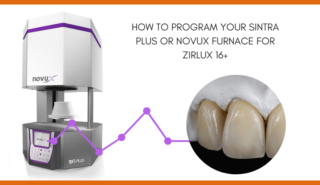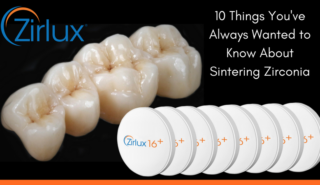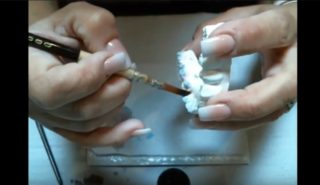
Indoor air quality refers to how the air inside of a building affects a person’s health, comfort, and ability to work including temperature, mold from water damage, humidity, poor ventilation, and exposure to other chemicals.
Last year, dental technicians were ranked as the fourth unhealthiest job in the U.S by Businessinsider.com. Poor air quality is the number one health concern among dental laboratories because they’re usually located in commercial or residential building enclosures and the capture and evacuation of airborne dust from normal operations can be difficult.
Without incorporating an adequate filtration system in your laboratory, hazardous airborne contaminants such as zirconia, gypsum, and ceramic dust will accumulate in employee’s lungs and pose the risk of respiratory illnesses.
Employees’ health is not the only thing at risk. You may be harming your lab equipment too! As hazardous contaminants remain suspended in the environment for extended periods of time, you risk damaging your equipment. In return, you could be threatening your lab’s productivity and increasing operational costs due to having mills down and less work coming in and going out.
The solution to this issue is collecting contaminants at the source with a dust collector and investing in an effective filtration system or air purifier. First, you should connect a HEPA dust collector to your milling machines as this will ensure that you are collecting fine zirconia dust contaminants right at the source. However, fine particles will remain suspended in the air for hours to days; which is why an air purifier is needed in your milling room as well.
An effective filtration system reduces harmful airborne zirconia dust. In return, it reduces re-work in the porcelain department and decreases airborne plaster in the model room as well as airborne aluminous oxide in crown and bridge. A good filtration system should also reduce hazardous airborne metals like beryllium, nickel, chromium and cobalt. You will drastically reduce monomer, burn-out, and boil-out odors. In the end, an air purification system will also reduce maintenance costs as you reduce heating and air-conditioning energy thus creating a healthier work environment for everyone.
It’s important to note that HEPA filters alone do not remove chemical contaminants from the air like gasses, volatile organic compounds or VOCs, and odors – they’re only effective against fine particles. Therefore, you’ll need to make sure your lab has refillable chemical filters because they use carefully formulated filtration media blends to remove the chemicals.
How to detect an IAQ problem in the lab
- Unpleasant/musty odor
- Headache/fatigue when you’re not in the lab
- Fever
- Cough
- Shortness of breath
- Asthma/pneumonia
How to test your lab for an IAQ problem
There is no single test for an IAQ problem, but you can take these steps to check your lab:
- Check temperature
- Look at the humidity
- Examine the air flow
- Inspect ventilation
- Check heating and air conditioning systems
- Walk-through of building to check for odors, water damage, leaks, dirt or pest droppings
- Eliminate standing water in humidifiers, air conditioners, on roofs, in boiler pans
- Test for radon or asbestos
What to do if you have an IAQ problem
- Talk to your employer and ask to check the ventilation, heating and air conditioning systems for water damage
- Talk to your doctor if you are having symptoms
- Contact an OSHA office or call their toll-free number 1-800-321-6742
- Send a written request for a workplace inspection
- Request a Health Hazard Evaluation (HHE) from the National Institute of Occupational Safety and Health (NIOSH)
How to prevent IAQ problems
- Follow the General Duty Clause of the OSHAct
- Obey occupational safety and health standards
- Employers should always inform employees of immediate dangers present
- Check with your state and city for specific regulations
Lastly, it’s important to remember safety always comes first. It’s all too easy to fall into your routine of every day production in the lab and forget to check things such as indoor air quality. Checking such aspects of your lab ensures the health of your lab technicians and staff as well as the quality of your equipment you invest so highly in. In return, you’ll ensure the quality of your lab and production of products you’re sending out. Making sure you invest in a good air purifier and dust collector will eliminate any concerns you could encounter.
If you’re interested in learning more about improving your lab’s production or workplace, check out this blog post on getting started with lean manufacturing.
Thanks for reading.
Your Zirlux Team
Reference
United States Department of Labor. (n.d.). Indoor Air Quality: Frequently Asked Questions. Retrieved from https://www.osha.gov/SLTC/indoorairquality/faqs.html



